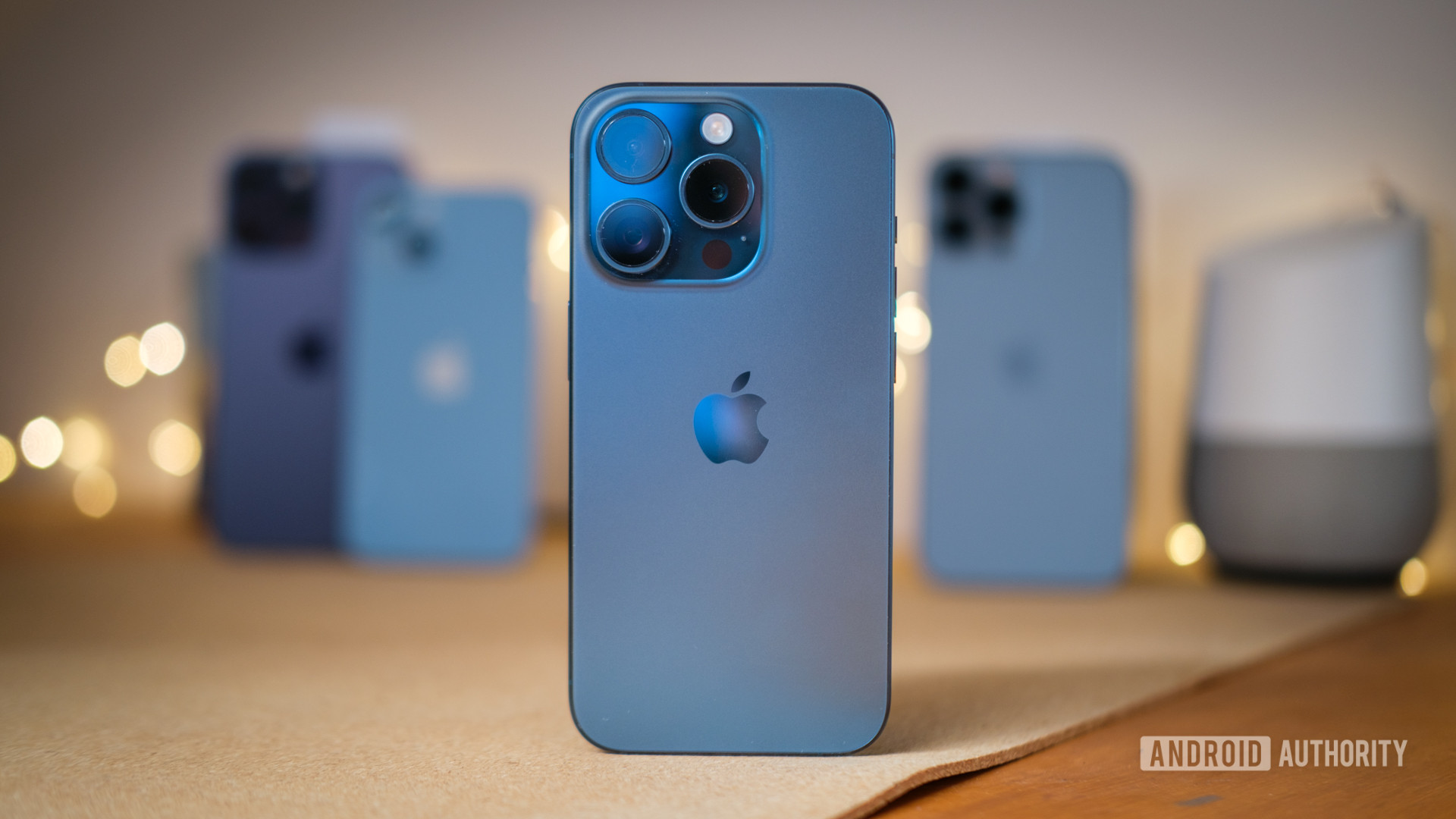Affiliate links on Android Authority may earn us a commission. Learn more.
How to transfer an eSIM on iPhone
Are you switching phones? You’ll want to transfer your line, and if you’re an iPhone user, you’ll need to get used to eSIM technology. eSIM is becoming the de facto solution for cellular connectivity, and newer iPhones in the US don’t even come with a physical SIM card slot anymore! With that in mind, you’ll need to learn how to transfer an eSIM on iPhone, and we’re here to help.
QUICK ANSWER
The simplest way to transfer an eSIM on an iPhone is to use the eSIM Quick Transfer feature. On your new iPhone, go to Settings > Cellular and select either Set Up Cellular or Add eSIM. Then, select Transfer From Nearby iPhone. The feature will look for a nearby device, and you will get prompts on the older iPhone to finish the process.
If this doesn't work for you, you can also try to activate the eSIM with the help of your carrier. Additionally, those with a physical SIM card can convert it into an eSIM. Keep reading to learn more about these processes.
JUMP TO KEY SECTIONS
Editor’s note: We used an Apple iPhone 12 Mini running iOS 17.3.1 to formulate these instructions. Some steps and menus may differ slightly depending on your device and software version.
Does my new iPhone support eSIM?

First things first, you can’t transfer an eSIM if your phone doesn’t support it. In the case of iPhones, here’s a list of the devices that have eSIM support:
- iPhone XR
- iPhone XS
- iPhone XS Max
- All iPhone 11 series
- All iPhone 12 series
- All iPhone 13 series
- All iPhone 14 series
- All iPhone 15 series
- iPhone SE (2020)
- iPhone SE (2022)
Again, it’s important to note that iPhone 14 and iPhone 15 devices do not come with physical SIM card slots in the US. These only support eSIM. That said, people in other markets can get versions with physical SIM card slots.
Your carrier can transfer an eSIM for you

If you get your new iPhone from a carrier, chances are the carrier will simply transfer your eSIM for you. This is pretty much always the case if you get it from a physical store. It is almost second nature for the representative to go through the process after a purchase. At the very least, they can walk you through the necessary steps.
If you are in doubt or get the phone from elsewhere, you can always get help from your carrier store. Additionally, Apple is known for its excellent customer service. You can waltz into an Apple Store and have one of the representatives help you with any Apple-related doubt, including transferring an eSIM to a new iPhone. You can even schedule an appointment at your local Apple Store to get specialized help.
Use Apple’s eSIM Quick Transfer feature
While getting help from Apple or your carrier is great for those who want a hands-off approach, some of us prefer to take matters into our own hands. Apple made it pretty simple to transfer an eSIM to a new iPhone using eSIM Quick Transfer. This method might not work for everyone, though. For starters, your carrier needs to support the feature, and both devices must be running iOS 16 or newer. Of course, that also means it doesn’t work with Android!
How to use Apple’s eSIM Quick Transfer:
- On the new iPhone, launch the Settings app.
- Select Cellular.
- Tap either Set Up Cellular or Add eSIM.
- Hit Transfer From Nearby iPhone.
- Your new iPhone will search for nearby devices.
- You will get some instructions in your old iPhone to finish the process. Follow them, and you’re done!
Activate a new eSIM
Maybe your older iPhone doesn’t have eSIM, or your carrier doesn’t support eSIM Quick Transfer. You might need to activate the eSIM from scratch. Don’t worry; the process isn’t too complicated.
First, you will need to contact your carrier and let the representative know you want to activate your eSIM on a new iPhone. Some carriers require that you give them some information. More than likely, you will need the IMEI number. Find it by going to Settings > General > About. Once the carrier has what it needs, it will push the eSIM activation to your phone, and you will get a “Finish Setting Up Cellular” notification. Tap on it and follow the process.
Some carriers make this process much easier by providing a QR code. If this is the case, just follow the steps below.
How to activate an iPhone eSIM using a QR code:
- Launch the Settings app.
- Go into Cellular.
- Tap either Set Up Cellular or Add eSIM.
- Select Use QR Code.
- Scan the QR code provided by your carrier and follow the finishing prompts.
- You can also use the Open Photos or Enter Details Manually options.
Convert physical SIM to eSIM
There is another option for those who are using a physical SIM card slot on their old iPhone! Again, the carrier needs to support the feature, and you obviously would need an iPhone with a physical SIM card slot. As mentioned earlier, iPhone 14 and iPhone 15 models in the US don’t have one. If your new iPhone comes with a physical SIM card slot, you can simply insert your old SIM card into it and convert your physical SIM into an eSIM.
How to convert your physical SIM card to eSIM on an iPhone:
- Launch the Settings app.
- Go into Cellular.
- Hit Convert to eSIM. If you don’t see this as an option, your carrier doesn’t support the feature.
- Select Convert Cellular Plan.
- Tap on Convert to eSIM.
- Wait a bit until the process finishes. Then, you can remove the physical SIM and restart your iPhone.
FAQs
eSIM first came to iPhones with the iPhone XS series and the iPhone XR. All iPhones after this support this feature.
Sadly, not all iPhone users can take advantage of eSIM Quick Transfer. For starters, both iPhones need eSIM support. Also, not all carriers support eSIM Quick Transfer.
You could opt to simply continue using a physical SIM on your iPhone, and it actually has its advantages. That said, Apple is moving away from this older technology. The iPhone 14 series and iPhone 15 series no longer come with physical SIM card slots in the USA.